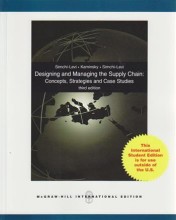Cultural Industries
13 important questions on Cultural Industries
Studio system in 'The Golden age' (Storper)
2. Fordist production
3. Mass production
4. Production strategies
5. Entry barriers
6. Internal labour markets (long-term contracts)
7. 'Star system'
Flexible specialization in Hollywood studio's (Storper)
2. Post-fordism
3. Differentiated products
4. New film studie strategies
5. Project-based production
6. External labour markets (short term contracts)
7. 'Star power'
What were the shocks to the studio system (Storper)
2. Advent of television
- Higher grades + faster learning
- Never study anything twice
- 100% sure, 100% understanding
Define the characteristics of a flexibly specialized organization (Storper)
2. Individual firms use flexible and widely applicable technologies
3. They balance competition and cooperation among firms
Name the strengths of a network & project-based form of organization (Starkey et al.)
2. Coping with risk and uncertainty
3. Flexibility to deal with changing market demands
4. Integrating different types of knowledge and skills
Name the weaknesses of a network & project-based form of organization (Starkey et al.)
2. Aligning with interests of the (other)organization
3. Achieving economies of scale
4. Protecting knowledge and organizational learning
Define the latent organization (Starkey et al.)
grouping of individuals and teams of individuals that persist through time and a periodically drawn together for recurrent projects by network brokers.
Define haut couture and name the rules (before 1970) (Djelic)
- Employ 20+ people in production
- Present each season a collection of 75+ designs
- Present these collections with 3+ live models
- In house itself in special areas
Name the core competences of design houses from France, Italy and US (Djelic)
Italy: manufacturing/design/ready-to-wear
US: Brand management/design/selection of materials/outsourcing
Name the benefits of identification (Bhattacharya et al.)
Name the factors of member identification (Bhattacharya et al.)
2. Affiliation or membership characteristic
3. Activity characteristics
Name the implications for museum managers (Bhattacharya et al.)
2. Strengthen identification
3. Enhance prestige
4. Focus on 'monogamous' members
5. Use price differentiation
Name the arguments against customer orientation (Voss and Voss)
The question on the page originate from the summary of the following study material:
- A unique study and practice tool
- Never study anything twice again
- Get the grades you hope for
- 100% sure, 100% understanding




























